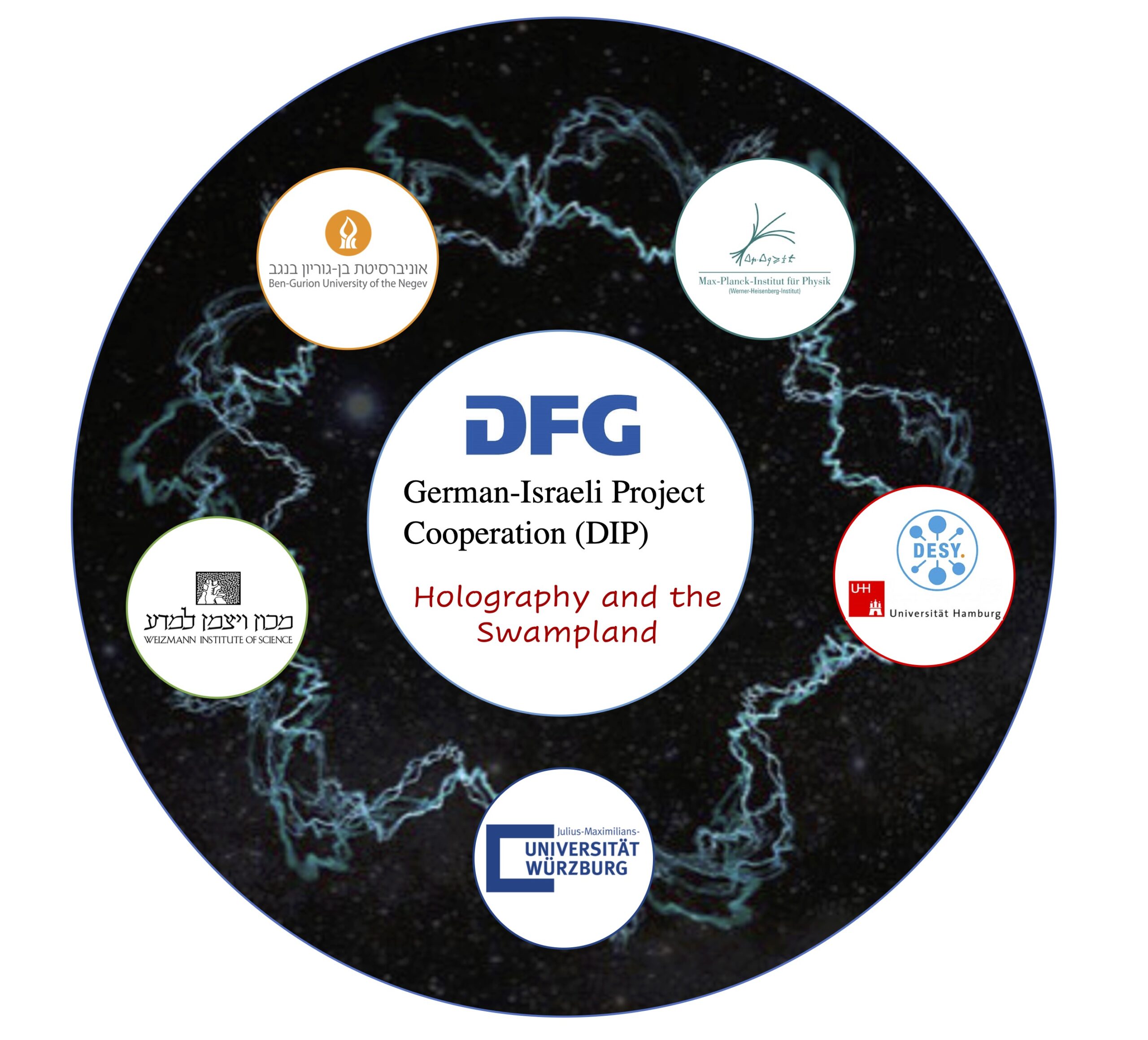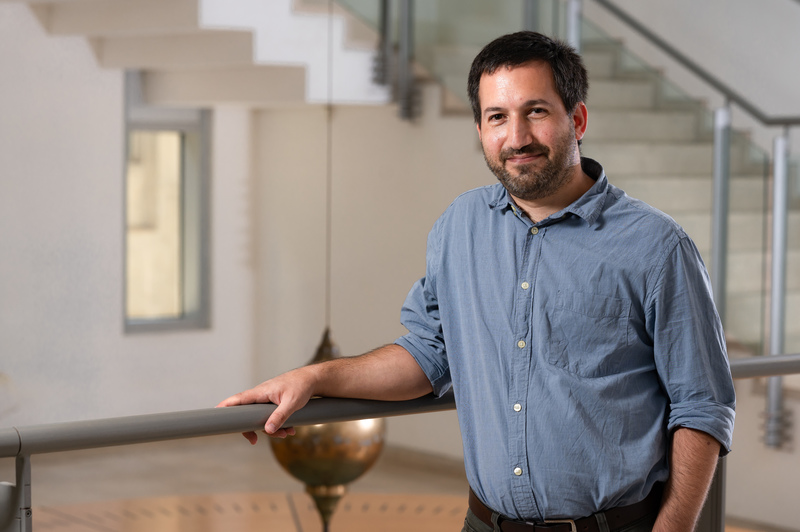
Hi, I’m a professor of physics at Ben-Gurion University of the Negev, Israel.
I work on theoretical physics, with a particular interest in aspects of quantum gravity and string theory.
You can find my publications on Inspire HEP.
Research Overview

String Theory
String theory begins with the proposition that the fundamental constituents of the universe are string-like rather than point-like. Remarkably, this leads to a consistent theory of quantum gravity. It also includes all the other forces we know of in nature, all unified into a single entity, the string. The theory has yielded remarkable insights into the nature of quantum gravity, as well as the other fundamental forces and matter in the universe. It is still work-in-progress though, we do not have a complete picture. I work on many aspects of string theory: Trying to understand its fundamental dynamics, but also what its implications are for our observable universe, and more generally, for how we construct theories of physics.

Quantum Gravity
Our theories of the very small, Quantum Mechanics, and the very large, General Relativity, are incompatible. A theory of quantum gravity is one which combines them in a consistent way. Currently, we know of only one such theory: String Theory. But string theory, as yet, provides only a partial picture of quantum gravity. I also work on understanding aspects of quantum gravity from a more general perspective, by thinking about properties of black holes, as well as utilising gravitational holography.
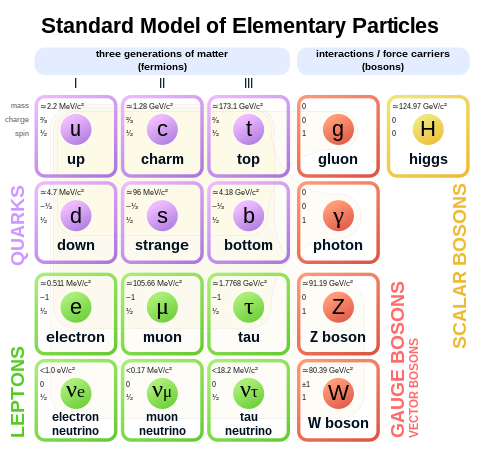
Theoretical Particle Physics
The Standard Model of particle physics describes with great accuracy all the physics that we can test in current colliders. However, many mysteries remain: there are over 20 unexplained parameters in the model. Further, some parameters, like the mass of the Higgs particle, are measured to be very different to what is expected theoretically – the so called Hierarchy problem. We also know that there is more matter out there to discover, for example the Dark Matter that we observe cosmologically. I am interested in understanding why, and how, the Standard Model of particle physics takes the form that it does. As well as what particle physics lies beyond the Standard Model. I study these questions primarily through String Theory.
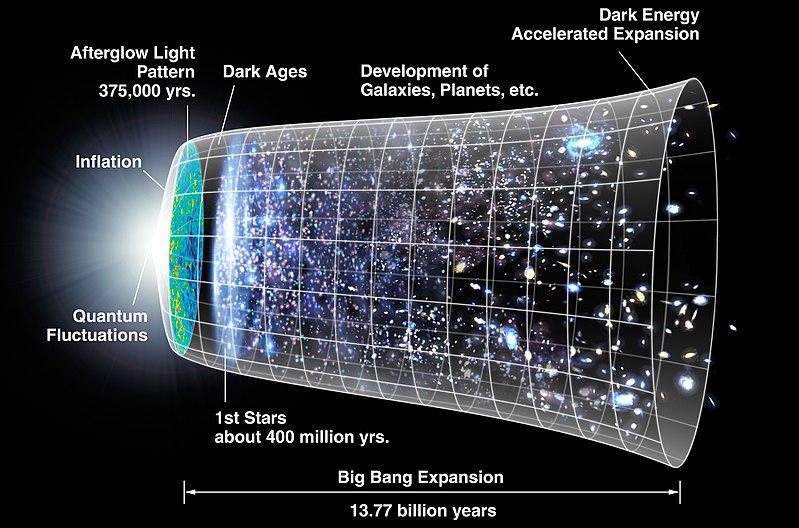
Theoretical Cosmology
The cosmological history of the universe is being measured with increasing precision every year. From a theoretical perspective, there are significant gaps in our understanding of how this cosmology comes about from fundamental physics. Specifically, how the two phases of accelerated expansion of the universe arise: One phase in the very early universe termed Inflation, and one in the late universe, driven by Dark Energy. I am interested in how these observed accelerated expansions can arise from string theory, what are the resulting signatures and what are the constraints that string theory imposes on existing cosmological models.
Recent Projects
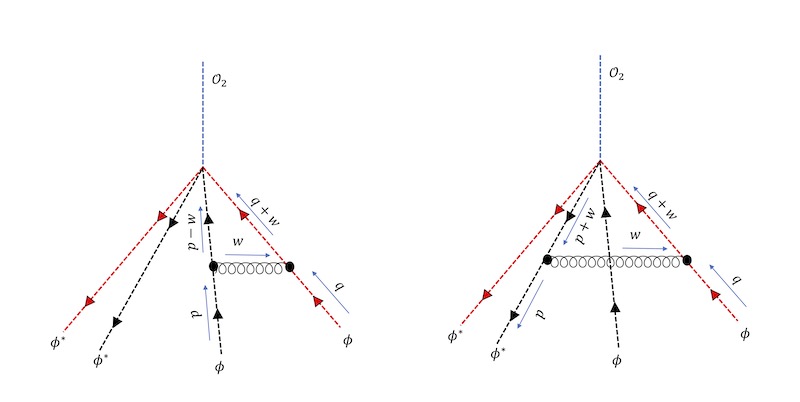
Convexity of Charged Operators and the Weak Gravity Conjecture
One of the properties which appear to be universal within string theory is that the gravitational force is always the weakest force. The Weak Gravity Conjecture proposes that this must be a general property of any theory consistent with Quantum Gravity. In a recent paper with Prof. Aharony of the Weizmann Institute, we studied the consequences of this for Conformal Field Theories (CFTs) which are holographically dual to gravitational theories. We discovered that it implies a certain convexity property of charged operators in the the CFTs. We then tested this in all the CFTs for which we could calculate this property and found that it is indeed satisfied (the figure above shows that type of Feynman diagrams which we needed to calculate in order to test this property). This opens up new unexplored directions in CFTs, but also presents an opportunity to prove the Weak Gravity Conjecture using holographic duality.
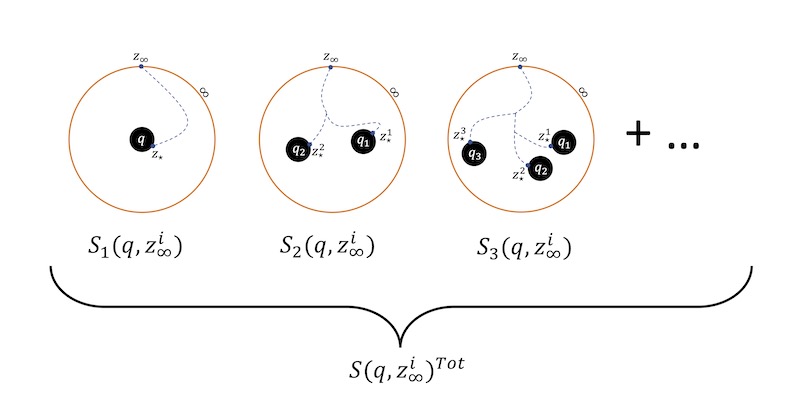
Stability of Supersymmetric states and Black Holes at weak-coupling
It has been conjectured that, in any theory of quantum gravity, a weak-coupling limit for any gauge field (electromagnetic force) must be accompanied by an infinite tower of charged states becoming light. In a paper I studied this in the context of type IIB string theory. I showed that, at least with sufficient supersymmetry, in any weakly-coupled region of parameter space the stability of charged states is determined by their mass in the full weak-coupling limit only. This result utilised insights from a correspondence between black hole solutions with multiple centres, and the spectrum of charged states in the theory (the figure above shows how multi-centred black hole solutions count the number of charged states in the theory). Using this it is possible to formulate the stability of charged states in terms of the so-called Mixed Hodge Structure associated to the weak-coupling limits, thereby drawing new connections between physics and what is a very active topic in contemporary mathematics.

Instantons in String Theory and Vaccum Instability
String theory posseses classical vacuum solutions which have a vanishing cosmological constant, so correspond to flat spacetime, and are minimally supersymmetric (preserve the smallest amount of a symmetry called supersymmetry). However, such solutions can become destabilized due to non-perturbative quantum effects called Instantons. In a paper with Prof. Cumrun Vafa of Harvard University and Prof. Timo Weigand of the University of Hamburg, we studied such vacuum destabilisation due to instantons. We utilised quantum dualities in string theory (a map of these dualities is shown in the figure above) to allow us to calculate the presence of such instantons. We discovered that all known vacua become destabilised due to the instantons unless they posses a certain `hidden’ additional supersymmetry which is realised through a discrete gauge symmetry. Inspired by these findings, we proposed that this should be a general property of any flat-space vacua of quantum gravity: that non-perturbative quantum stability requires certain aspects of non-minimal supersymmetry.
News
Frontiers of Science Award
My co-authors, Thomas Grimm (Utrecht) and Irene Valenzuela (CERN), and I have been awarded a Frontiers of Science Award in the catagory of Quantum gravity and Quantum field theory.
Dr Joan Quirant, Jarod Hattab, Ze'ev Girsh, Dvir Cohen and Omer Elbaz join the group
Over the past year or so our group has grown. We welcome Dr Joan Quirant, our new postdoc. Jarod Hattab, our new PhD student, and three new Master’s students: Dvir Cohen, Ze’ev Girsh and Omer Elbaz.
German-Israeli DIP Grant
A German-Israeli collaboration network (DIP), which I am heading with my German colleague Dieter Lüst, has been awarded a grant from the DFG of €1.65 Million. The collaboration involves 5 institutes in Israel and Germany and will work on Quantum Gravity and String Theory.
Collaboration Website: DIP Collaboration on Holography and the Swampland
Press Releases: Ben-Gurion University press release (Hebrew Version), Max-Planck Institute press release
Review of the Swampland is the most cited publication of the last 5 years in high-energy theoretical physics
In the past 5 years there have been 19,805 scientific articles published in high-energy theoretical physics. The most cited of these is the review of the Swampland I authored.
Article published in PRD chosen as Editors Suggestion
A recent article published in collaboration with Prof. Ofer Aharony of the Weizmann Institute was chosen as Editors Suggestion for the journal Physical Review D.
Dr Nicolo Petri and Dr Marco Michel join the group as postdoctoral researchers
Two new postdoctoral researchers have joined the group. Dr Nicolo Petri received his PhD from the University of Milan, and works on string theory. Dr Marco Michel received his PhD from the Ludwig Maximilian University of Munich, and works on quantum gravity.
Asaf Arzi joins the group as a PhD student
Asaf has joined the group as a PhD student. He received his Master’s and Bachelor degrees from the Hebrew University of Jerusalem.
Dr Stefano Andriolo joins the group as a postdoctoral researcher
Dr Stefano Andriolo has joined the group as a postdoctoral researcher. Stefano received his Phd from Hong Kong University of Science and Technology under the supervision of Prof. Gary Shiu and Prof. Henry Tye.

Israel Science Foundation Grant
I have been awarded a research grant from the Israel Science Foundation of ₪1 Million.


